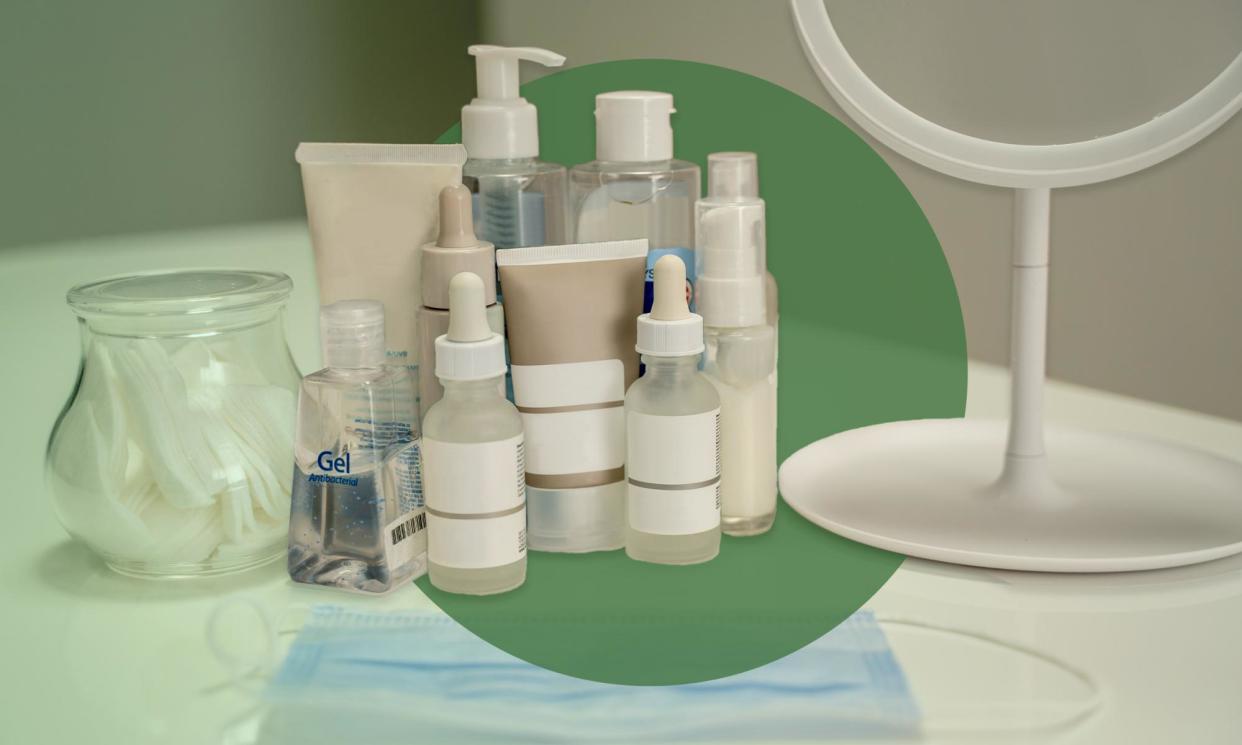Ablution pollution: minimise your hygiene carbon footprint with some simple regime tweaks

With a multi-billion-dollar beauty industry constantly shouting in our collective ear, it’s little wonder that many Aussie home bathrooms contain a sea of plastic-wrapped potions and lotions.
But for all their promises of youth and clean beauty, these products are often detrimental to our self-esteem and our planet. Most are destined to be thrown into landfill after use or, at best, channelled into the resource-intensive recycling system.
A decade ago, inan attempt to lower the carbon footprint of my daily ablutions, I started investigating swaps to rid my bathroom of all that plastic (and its associated often-shoddy beauty marketing).
Related: Clearing the air: how to get your household off gas
The answer lies in simplifying the products you regularly use to a few key items – some of which can easily be made at home, while others can be swapped for more environmentally friendly options.
Try a DIY face and body moisturiser
Rather than buying an array of different moisturisers and serums, I’ve condensed all that down into one single soothing salve, made in my own kitchen without any special equipment. My calendula salve recipe uses just beeswax, coconut oil and olive oil infused with dried calendula flowers, the latter grown in my back garden.
The salve is so thoroughly all-purpose it’s become something of a joke among family and friends – “have you tried putting salve on it” is the catchcry for everything from eczema and cracked lips to splinters and grazes.
Face washes and scrubs can be avoided too. Just warm water and a cotton face cloth are often enough to do the trick – this simplified routine helped me heal serious adult-onset acne in my early 30s. On the occasional days I wear makeup, I’ll add a dab of calendula salve because it also works well as a makeup remover.
Make all-purpose Castile soap
Old-school soap bars are generally more environmentally friendly than liquid soaps packaged in plastic bottles.
Back when I lived in Spain, an octogenarian grandmother sat with me for an afternoon and shared her traditional Castile soap recipe.
This simple three-ingredient recipe was developed generations ago to reuse olive oil from the kitchen after it had turned golden from repeated uses cooking tortilla, chorizo and fried tapas. Spent oil would be sieved to remove food crumbs and then recycled yet again into a gentle plant-based soap concentrate.
The base soap recipe requires only water, olive oil and lye (caustic soda). When oil and lye are combined, a chemical reaction called saponification occurs and the resulting soap is safe for skin. You can also experiment with natural colours and scents, such as this exfoliating coffee and cinnamon version.
My homemade Castile soap has proven to be an all-purpose gamechanger in the bathroom – excellent for plastic-free body- and hand-washing, shaving and cleaning makeup brushes. Some folks even use it as a shampoo.
Turn homemade soap into green cleaners
Castile soap is famed globally as a natural and biodegradable base for a wide range of green cleaning products, from surface sprays to fruit and veggie washes and even homemade dog shampoo.
So, making your own soap opens up a world of possibilities for other DIY plastic-free bathroom and laundry products. I blitz my soap into a powder and then mix it with baking soda, washing soda and salt to create an effective natural laundry powder. One batch lasts for months.
Related: Ten effective habits to adopt if you’re an eco-enthusiast | Abigail Austin
Castile soap can also be mixed with water to create an all-purpose surface cleaner, or combined with a little bicarb soda and water for a grainier cleaner that helps polish bathtubs to a high shine.
Prioritise reusable and compostable products
When buying products you can’t make yourself, look for reusable or compostable products first. Bulk waste-free stores are helpful for researching what’s available. For example, I swapped a disposable plastic razor for a reusable stainless steel-handled shaver – the metal razor blades inside, once blunt, can be recycled.
Dental floss is usually made from plastic and must be binned but eco-friendly silk floss – often sold in refillable glass or metal containers – can be composted or placed in your kerbside green bin.
When it comes to hair care, shampoo soap bars proved problematic for my hair type, so I instead refill plastic shampoo and conditioner bottles at my local bulk food store. I buy my SPF50 sunscreen in a metal tin rather than a plastic bottle. And once my current pack of plastic cotton buds is finished, I’ll swap to compostable bamboo and cotton ones.
While beauty-promising products are still tempting at times, a plastic-avoidant mindset makes it easier to just say no – and it’s often healthier on the hip pocket, too.
Koren Helbig is a South Australian journalist and educator using permaculture principles to teach sustainable approaches to city living


